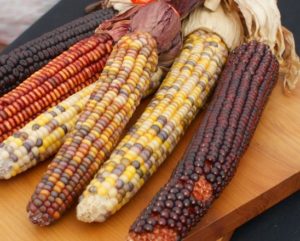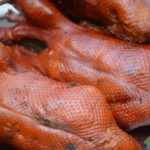 By Rich Niccum, Education Services Manager
By Rich Niccum, Education Services Manager
As we prepare for the Thanksgiving holiday I thought I would share some history and dispel some of the myths surrounding what we think of as the first Thanksgiving. In September 1620, about 120 men, women and children set sail aboard the Mayflower from England to the east coast of what is now New England. The ship they travelled on was not a plush passenger ship but a three-masted merchant ship designed to hold cargo and ill-equipped to carry people. There were no bathrooms or bath tubs, and conditions were less then sanitary and very uncomfortable for the 66-day journey. The ship eventually landed off the shores of Cape Cod, the site of present day Massachusetts.
That first winter was a tough one as they began building houses and other structures that would become their settlement. Most passengers stayed on the Mayflower while the first houses were built, and unsanitary conditions and cold weather contributed to disease that overtook many. By spring of 1621, more than half of the Pilgrims and crew had died from disease.
Squanto, a native American who had been kidnapped and taken to Europe before returning to North America, befriended the Pilgrims and acted as an interpreter and mediator between them and native people of the area. One tribe, the Wampanoag, would sign a treaty with the Pilgrims and help them adapt to the land and survive that first year.
In the Fall of 1621, the Pilgrims celebrated their first official harvest and the survival of their fledgling settlement. They invited the local Wampanoag to a three-day feast to celebrate and thank them for their help. Much food was shared, but it didn’t look anything like our Thanksgiving meal of today. Yes, they had turkey, but it was wild turkey and not our large domesticated kind. They most likely ate roasted duck and other fowl, including passenger pigeons, which were extremely plentiful. Here is a list of what was believed to be on the menu:
 Roasted wild turkey, duck, goose, venison
Roasted wild turkey, duck, goose, venison
Fish and eel covered with leaves and baked in coals
Shellfish including lobster, clams, mussels and oysters
Whole pumpkin, baked in coals and served with honey
Two or three other kinds of squash, cut in pieces and cooked in large kettles
Beans, peas and dried corn boiled in water
Corn meal, used to make corn bread and other flat iron breads
Acorns, hickory, walnuts and other nuts
Dried fruit including wild strawberries, raspberries, blueberries, grapes, cherries, cranberries and plums
Boiled corn meal, sometimes called gruel, served with honey
Beets, turnips, onions, garlic, radishes, mustard greens, mushrooms, carrots and wild leeks
 NOT on the menu were potatoes, as white potatoes from South America and sweet potatoes form the Caribbean had not yet made it to North America. There also was no cranberry sauce, which would be another 50 years in the making. There would not have been stuffing as we know it today, although meat might have been stuffed with nut meat and seasonings. Wine was not served during the meal; instead, most drank good old water. And finally – without flour or a stove – there were no breads or pumpkin pies.
NOT on the menu were potatoes, as white potatoes from South America and sweet potatoes form the Caribbean had not yet made it to North America. There also was no cranberry sauce, which would be another 50 years in the making. There would not have been stuffing as we know it today, although meat might have been stuffed with nut meat and seasonings. Wine was not served during the meal; instead, most drank good old water. And finally – without flour or a stove – there were no breads or pumpkin pies.
During their meals, the Pilgrims didn’t use forks, and only ate with spoons, knives and their fingers. Large cloth napkins were used: the men threw them over their shoulders to wipe their mouths and beards, while the women placed theirs in their laps. The best food was placed near the most important people, normally of highest social standing. Most didn’t sample all the foods but ate what was closest to them at the table.
So, while many of the customs and much of the food were very different from today, the spirit of the Thanksgiving meal has not changed. It is still a time for friends and family to gather around the table and reflect on what they are grateful for from the past year. So, take some time this Thanksgiving and think about what you are most thankful for in 2018. And take a moment to stop and think about what it might have been like to attend that first celebration in 1621. Happy Thanksgiving from Preservation Parks.







